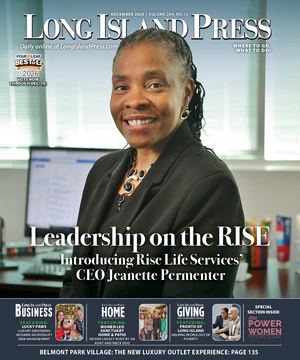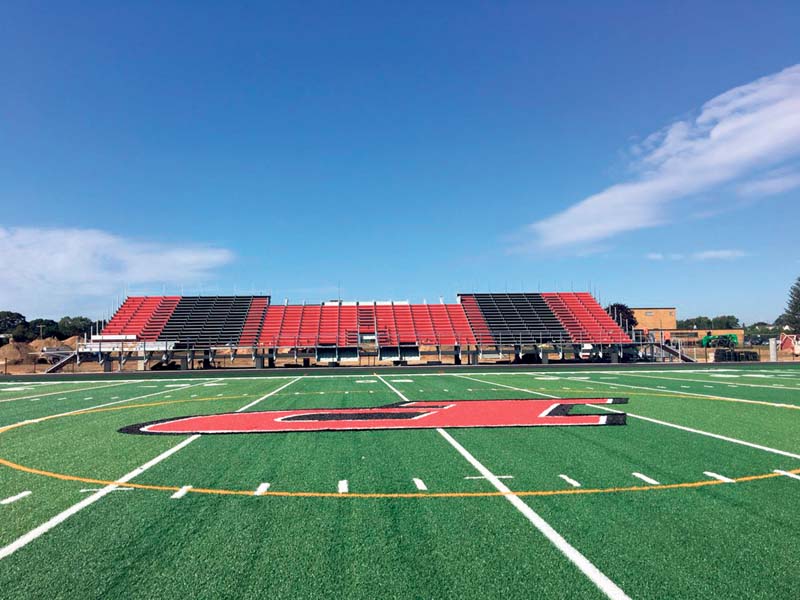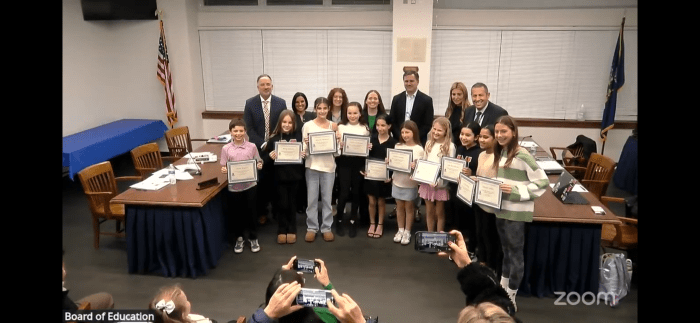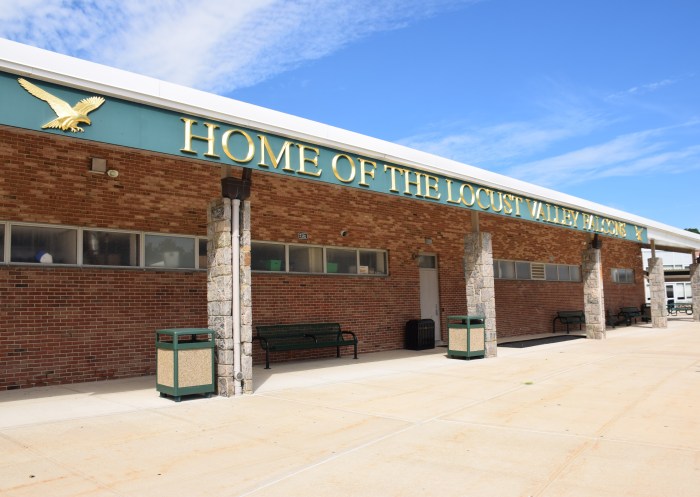District rebuts comptroller’s criticism

“Budgeting is not an exact science.”
Those were the words Plainedge School District (PSD) officials used in responding to the Office of the State Controller (OSC).
After all, that was an observation frequently made by state auditors during their visits to the district.
The OSC recently released the results of an audit covering the years 2013-14 through 2016-17. It criticized PSD budget practices that may have skirted the law and led to unnecessarily high tax levies.
District officials argue that they practiced wise financial management in the face of an uncertain fiscal environment.
District officials were also “pleased that this extensive review has resulted in no findings of material weaknesses, operations impropriety, fraud, waste or abuse.”

Imbalance?
The OSC compared the revenue and expenditure estimates with actual numbers for the school years 2013-14 through 2015-16. Though “revenues were reasonable and generally close to actual revenues received…district officials consistently presented, and the board approved, budgets which overestimated appropriations for each of the three fiscal years.”
Continued the report, “District officials overestimated expenditures by as much as $6.9 million, for a total of $15.1 million (6 percent) from the 2013-14 through 2015-16 fiscal years.”
The end result was an unrestricted fund balance that in two of the three years reviewed surpassed the statutory limit set by New York State Real Property Tax Law. The balance cannot be more than 4 percent of the subsequent year’s budget.
According to the OSC, “Budgeting practices that continually overestimate expenditures may result in the accumulation and retention of excessive funds, resulting in tax levies that are higher than necessary.”
The practice continued, alleged the OSC, noting that district officials projected to “have overestimated expenditures by a total of $8.5 million (10 percent) at the end of the 2016-17 fiscal year….Unreasonable budget estimates may mislead district residents and can significantly impact the district’s year-end unrestricted fund balance and financial condition.”
The OSC also charged the district with overfunding four of its five reserve funds, whose balances totaled $23.3 million as of June 30, 2016. These are restricted to specific purposes, and in the case of Plainedge include retirement contributions ($7.7 million), capital ($7.6 million) and Employee Benefit Accrued Liability Reserve (EBALR) ($4.2 million).
To take one example, the retirement reserve had a balance of $7.7 million, but PSD’s “average annual retirement contribution expenditures from fiscal years 2013-14 through 2015-16 were $1.2 million. Therefore, the retirement reserve balance is more than six times the average annual expenditure.”
It added that the reserves were “funded at the end of each fiscal year from excess fund balance instead of being included in the annual budget presented to district residents.”
These and other practices, the OSC maintained, showed lack of transparency.
 More Responses
More Responses
The district pushed back with a detailed rebuttal signed by Edward Salina, superintendent, and Catherine Flanagan, school board president.
The PSD was concerned that “the tone of the report would mislead a reader, unfamiliar with the entirety of both the audit process and school district operations, to conclude that the district has overfunded reserves and over-estimated expenditures, which is a gross mischaracterization of the district’s long-term fiscal approach…”
It also affirmed, based on extensive analyses, that “the multiyear plan, in all instances, concludes that in future years, the district’s ability to raise revenues does not keep pace with a projected increases in expenses.”
District officials, before addressing the specific charges and recommendations by the OSC, boasted of the district’s accomplishments in academics, athletics, its facilities and extra-curricular activities.
It also noted that it had earned praise from its external auditors for “maintaining an exemplary fiscal condition” and boasted of its Aa2 bond rating from Moody’s for its “stable financial profile, low debt and strong financial condition.”
The reason its reserves and fund balance are as high as they are, according to the district, is because “of the profound challenges faced by the district during the years examined,” specifically:
- the property tax levy cap
- frozen and/or unpredicatble state aid
- unfunded and underfunded mandates imposed by the state/federal governments
- collective baragining negotiations
- tax certiorari proceedings which could lead to lower tax assessments
- unpredictable payments-in-lieu-of-taxes (PILOT) associated with LIPA properties
The response noted that, thanks to state budget crises dating back to the Great Recession, the district has lost a cumulative $25.2 million in state aid.
“The impact of [these and other] factors may amount to millions of dollars in any given year,” PSD officials attested.
OSC Vs. PSD: Point-Counterpoint
Here are the recommendations of the comptroller’s audit, with the district responses, most of which begin with a statement of disagreement:
- Adopt budgets that include reasonable estimates for appropriations.
PSD: Argued that “our budgets are realistic and in line with our budgeting philosophy.” Noted that over the past three years, the average tax levy (amount to be raised by property taxes) increase was 1.11 percent and in 2017- 18, its levy was 0 percent. “Proper budgeting requires that we consider and anticipate the need for contingencies,” officials wrote, noting that one special ed student unexpectedly enrolling into the district could cost it as much as $300,000 per scholastic year.
- Discontinue adopting budgets that result in the appropriation of fund balance that is not needed to fund district operations.
PSD: Again brought up the unpredictability and uncertainty of a wide spectrum of expenditures. “Absent appropriated fund balance and reserves, estimated revenues would need to increase, or budget reductions would occur that would negatively impact the students, staff, community, operations and the district facilities.”
- Ensure that each reserve fund is established by a board resolution that includes the financial objective for the reserve and conditions under which it will be used.
PSD: Pushed back against the inference that the “reserves are overfunded and that the funds were held from productive use, taxes were unnecessarily levied and transparency of district finances reduced.” It noted that it “prided itself on the transparency of its budget process.” Further, “it “looks at past patterns of expenditures and anticipated needs for long term liability, and funds the reserves accordingly.” And the board resolutions approving the reserves were passed in December 2017.
- Use surplus funds as a financing source for: a. Funding one-time expenditures; b. Funding needed reserves; c. Paying off debt; d. Reducing district property taxes.
PSD: Agreed with recommendations and stated that it has done some of those things. But argued against the charge that the way its uses the fund balance “circumvent(s) the statutory limitation of retaining unexpended surplus funds to no more than 4 percent of the ensuing year’s appropriations….maintaining an adequate fund balance is a prudent fiscal practice…”
- When statutorily allowed, charge related costs to reserves appropriated in the budget.
PSD: Stated that it was fiscally unsound to include appropriations for the use of reserves in its budget. The response continued, “Based on best practices, industry standards, economic realities, and discussion with our auditors and Board of Education on an ongoing basis, we review the balances of the reserves to ensure our reserves are appropriately funded for our current and future needs.”
- Ensure that annual proposed budgets include the amounts of appropriated fund balance planned to fund reserves as a way to enhance transparency to residents.
PSD: Rejected the OSC’s suggestion “to include provisions in the budget for funding reserves” as well as levying taxes to fund the reserves. Again, contra the OSC, reiterated its open budget process and concluded, “We believe that a process whereby reserves are developed through efficiencies in the budget is a more transparent approach.”



































